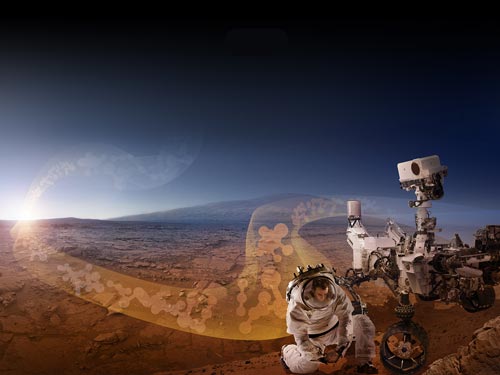back-contamination

Back-contamination is the accidental delivery to Earth, by sample-return probes or returning crewed missions, of microscopic biological contaminants from other worlds. Such contamination, in the form of alien viruses, bacteria, or spores, to which terrestrial life would have no immunity, could prove disastrous. For this reason, elaborate preparations were made to quarantine the first Apollo astronauts and the lunar samples they brought back (see Lunar Sample Receiving Laboratory). In the event, upon the return of Apollo 11, the agreed-upon quarantine protocols were immediately and seriously breached. The crane aboard the aircraft-carrier scheduled to lift the command module out of the sea unopened was found at the last moment to be unsafe. For this reason, and also to prevent the astronauts from becoming seasick, the spacecraft's hatch was opened and the crew allowed to exit while their craft was still in the open sea. Had there been any lunar pathogens aboard, therefore, these would have been released into the atmosphere.
Fortunately, the Moon is, and almost certainly has always been, lifeless. However, in the light of recent findings, the risk of back-contamination now seems much more real (though still small) in the case of some other satellites and minor objects in the solar system. Since NASA is planning, or has already launched, missions to collect and return samples from such objects, it has become a matter of urgency to decide how best to handle the samples upon their arrival here. With this concern in mind, NASA requested that a task force of the National Research Council survey the potential for microscopic life-forms existing on moons, asteroids, comets, and cosmic dust. The "Task Group on Sample Return from Small Solar System Bodies", made up of 11 scientists, including astronomers, biologists, and chemists, and chaired by Leslie Orgel, considered the conditions under which known types of life can propagate, including the presence of water and organic compounds, the availability of energy sources, suitable temperatures, and protection from ionizing radiation. It also took into account conditions under which life can remain dormant (see suspended animation) and the possibility that materials containing life-forms could have been transported to objects from elsewhere in the Solar System (see ballistic panspermia). The Task Group's report, published in 1998, concluded that, of the space objects considered, the greatest potential for harboring microorganism was offered by the Jovian moons Europa and Ganymede (although recent findings suggest that Callisto should also be included), and that strict containment procedures should be adopted for material brought back from these worlds, along the lines of those recommended in a 1997 Research Council report for samples returned from Mars. In addition, samples from certain types of asteroids, notably the P-type and D-type asteroids found in the outer parts of the main asteroid belt, were deemed to merit strict procedures because so little is known about their origin or composition. The Task Group also recommended that dust particles collected near Europa, Ganymede, and these asteroids be treated with the same precaution. On the other hand, it was concluded that the Moon, Io, new comets, and cosmic dust exposed for long periods to hard ionizing radiation in space could safely be assumed sterile. The report recommended setting up a database of the conditions under which extremophiles had been found living on Earth with a view to setting limits on survivability elsewhere in space and determining the levels needed to sterilize extraterrestrial samples.


